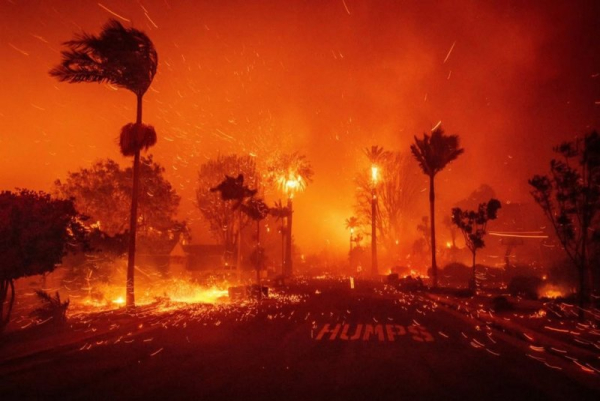
Wildfires are becoming increasingly common in the American West, and researchers are working tirelessly to understand how the resulting smoke affects air quality, human health, and climate change.
“Wildfires don't directly emit ozone,” said Ian Mandel, professor emeritus of mathematics at the University of Colorado Denver, in a press release. “Wildfire smoke contains chemical compounds that react with sunlight to form ozone, often far from the fire itself.”
In turn, this additional ozone layer contributes to global warming.
Mandel developed a computer model to estimate the impact on air quality of the massive wildfires that swept across the West in 2020.
His work with researchers from the University of Utah and San Jose State University in California was the centerpiece of a study published in the November issue of the journal Atmospheric Environment.
Focusing on the August 2020 wildfires that burned more than 1 million acres in Northern California and dozens of smaller fires in Utah and Oregon that combined burned 400,000 acres, they studied ozone levels and air quality.
Hundreds of miles from the wildfires in Colorado, residents struggled with smoky skies and constant warnings about air quality and pollution.
However, the study showed that the influence did not end there.
These massive wildfires not only released massive amounts of ozone into the air, affecting the lungs of people far from the fire zone, but also exacerbated climate change.
As part of the study, Mandel worked with Derek Mallia of the University of Utah and Adam Kochanski of San Jose State University to model the extent to which chemical emissions from wildfires enter the atmosphere.
Conclusion: On average, wildfire smoke increases ozone concentrations by 21 parts per billion (ppb).
Adding to already high ozone levels in the West, this leads to levels exceeding the 70 parts per billion limit set by the U.S. Environmental Protection Agency.
Exposure to high levels of ozone can cause a variety of symptoms, from coughing to lung and heart disease, to premature death.
“Large wildfires like the one that occurred in August 2020 are likely to become more frequent in the coming decades due to increasing aridity caused by climate change,” Mandel's team writes.
“Thus, improving summer air quality in the western United States remains a challenge,” the study said.
The results suggest that further reductions in pollution levels may not be enough to offset the effects of smoke from large wildfires, particularly during the summer months.
The study notes that large wildfires can emit as much nitrogen oxide as all other anthropogenic sources combined in the western United States. Wildfire smoke also contains fine particles, which pose a significant health risk.
“Given the complexity of the underlying physical and chemical processes governing smoke plume transport and chemistry, further research is needed to better understand how wildfires influence… ozone distribution,” the study authors concluded.
Additional information
The National Interagency Fire Center provides a wildfire monitoring system and fire prevention resources.
Copyright © 2025 HealthDay. All rights reserved.

Sourse: www.upi.com





